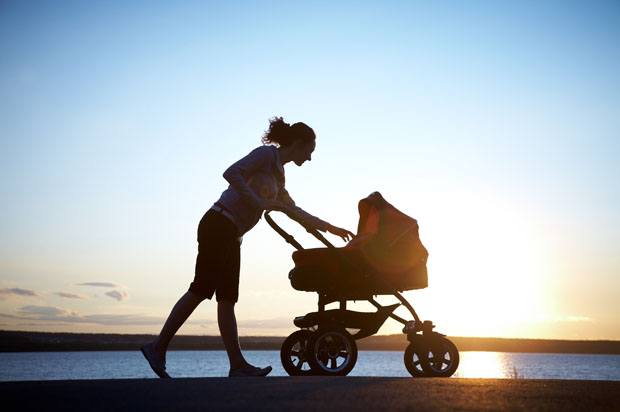When, why and how to breastfeed a newborn baby
It's not surprising if stories of enlarged and sore boobs have left you feeling conflicted about what's best for you and your baby. The Mix gives you the facts on when, why and how to breastfeed a newborn baby so you can decide whether it’s for you.

Breastfeeding in the UK
The UK actually has one of the lowest breastfeeding rates in Europe, with only 48% of mothers continuing to breastfeed after the 6-8 week mark. However, this is neither a positive or negative statistic. It simply means that more British women are choosing other options.
Some positive breastfeeding facts
- The first breast milk produced in the days after birth is called colostrum, which is rich in antibodies that boost the baby’s immune system.
- Breast milk reduces the risk of diarrhoea, chest, ear and urinary tract infections, gastroenteritis and eczema.
- Breast milk is nutritionally balanced, containing all the protein, carbohydrates, fats, vitamins and iron your baby needs to grow.
- Breastfed babies have less smelly nappies.
- It can reduce the risk of mothers developing ovarian and breast cancer.
- Breastfeeding is free and eco-friendly.
- You can use a breast pump to keep milk in a bottle and freeze it in case your milk supply dwindles.
- Contrary to popular belief, breastfeeding doesn’t necessarily mean you’ll get saggy boobs, according to plastic surgeons in the US.
Beyond the evident health benefits, the positive impacts of breastfeeding extend to the overall well-being and bonding between parents and their infants. The act of breastfeeding fosters a unique connection between the child and the mother, promoting a sense of security and comfort. This intimate experience goes beyond mere nourishment, creating a profound emotional bond that contributes significantly to the psychological development of the child. Parents, particularly mothers, often find solace in the tender moments spent breastfeeding, strengthening the emotional ties that form the foundation of a nurturing family environment.
Amidst these heartwarming moments, parents often seek ways to enhance the bonding experience, and one delightful addition to this journey is the use of baby onesies. These soft and adorable garments not only provide practical comfort for the baby but also serve as a charming expression of love and care from the parents. As parents dress their infants in these cozy baby onesies, it becomes a delightful ritual that adds a touch of joy to the everyday caregiving routine, reinforcing the positive and loving atmosphere within the family.
How to breastfeed a newborn baby
How to breastfeed is probably one of the biggest questions new mums have – so we’re here to help out. So if you choose to breastfeed your baby, keep reading.
Babies can breastfeed 8 to 12 times in 24 hours with each feed lasting up to 45 minutes, so it’s important to find breastfeeding positions that feel comfortable for both of you. Here’s our helpful guide for how to breastfeed your baby.
- Make sure you’re sitting comfortably with your back and arms well supported on cushions. When it comes to how to breastfeed a baby, just as long as you’re as comfortable as possible – you’re doing it right.
- In terms of breastfeeding positions, try to hold the baby lengthwise, with their nose level with your nipple. You should also use a cradle hold to make sure their back, shoulders and neck are supported. This helps them with swallowing when there’s milk flowing.
- Wait until the baby opens their mouth widely then gently touch your breast and guide it into the mouth, making sure their tongue is below your nipple.
- The baby should take a big mouthful of breast, covering the whole areola (the dark area around the nipple). Squeezing the areola to make it the same size as the baby’s mouth can help it to latch on.
- When your baby’s had enough milk, they will come off the breast by themselves, and should appear content and satisfied! You may find that your baby falls asleep while breastfeeding, so it could take a few attempts to keep them awake until they’ve had their fill.
Problems with breastfeeding
Uterine cramping
Uterine cramping may affect you in the days after birth and possibly longer. This happens because the same hormone that stimulates milk to be released from the breast also causes uterine contractions. This pain can be treated with over-the-counter pain medications, but always check with your doctor (GP) first. You can always get help finding a doctor here if you need it.
Tender breasts
As your breasts fill with milk, you may find they feel uncomfortable and tender – this is often referred to as engorgement. Again, this generally only lasts a few days and there are ways to make things less painful. For example, wearing a supportive bra.
Problems latching on
Many new mums have problems getting their baby to latch on properly at first. You may also find that your nipples feel sore. However, cracked and bleeding nipples aren’t a normal side effect and could mean that your baby isn’t latched on properly to your breast. If this is happening to you, make sure to get some expert advice from a lactation consultant or doctor.
Watching your diet
Remember: Everything you eat goes into your breastmilk and some babies may react to some of those foods. But don’t worry, the NHS can help with that. It has some advice on what to eat here.
Is breastfeeding in public legal?
Yes. It’s completely legal to breastfeed in public, so it’s totally up to you.
Unfortunately, because women’s bodies are often objectified in our culture, you might get funny looks or even rude comments. Some women choose to put a light scarf over the baby while they’re feeding to avoid drawing attention to themselves. You can also look out for places which are breastfeeding friendly. Regardless, there’s no rulebook on how to breastfeed a baby in public, it’s your prerogative to decide what you feel comfortable with.
Spoken-word artist Holly McNish was so furious when she was told to stop breastfeeding in public that she wrote this poem about it. She’s actually part of a growing movement of people who want to make breastfeeding in public the norm.
Get support on how to breastfeed a baby
Women can feel a lot of pressure to breastfeed. But there’s no ‘right’ or ‘wrong’ way when it comes to feeding your baby.
Talking to a midwife or health worker who is properly trained in breastfeeding management can help. Organisations, such as the Breastfeeding Network, have telephone helplines that provide support for young mothers. You can also visit one of the UK’s Baby’s Cafe drop in centres. There are a number of centres open around the country.
Formula milk vs breastfeeding
Breastfeeding requires commitment. It can be challenging and time-consuming at the best of times, so some mums may choose to bottle feed instead by using formula milk. Although formula milk doesn’t have the antibodies of breast milk, it’s still a nutritious alternative and has advantages of its own:
- Bottle feeding can give you more freedom and flexibility.
- It’s easier to work out how much milk your baby is getting.
- Fewer feeds may be needed as formula is digested more slowly than breast milk.
- Bottle feeding duty can be passed on to the father, or friends and family, leaving you and your body free to have a well-earned rest.
- No worrying and/or panicking about how to breastfeed a newborn
Next Steps
- Chat about this subject on our Discussion Boards.
By Marcella Carnevale
Updated on 26-Nov-2021
No featured article














